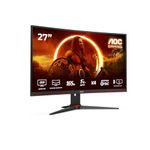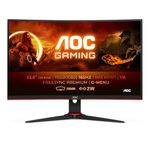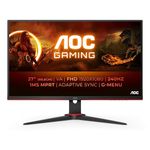10 bestConsole Gaming Monitorsof December 2025
112M consumers helped this year.
1
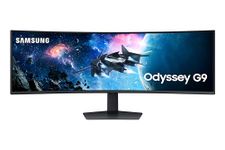
Samsung LS49CG954EUXXU Odyssey 49" Curved Gaming Monitor - VA, 5120x1440, HDMI 2.1, 1ms, 240Hz
Samsung

9.9
2
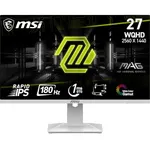
MSI MAG 274QRFW 27 Inch WQHD Gaming Monitor - 2560 x 1440 Rapid IPS Panel, 180 Hz - 1ms GtG, 123percentage sRGB Colour Gamut, Frameless Design, DisplayHDR 400 - DisplayPort 14a, HDMI 20b
MSI

9.8
3
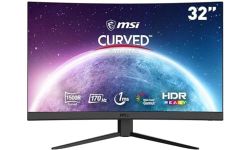
MSI G32CQ4 E2 31.5 Inch WQHD Curved Gaming Monitor - 1500R 2560 x 1440 VA Panel, 170Hz / 1ms, Adaptive Sync - DP 1.2a, HDMI 2.0b CEC
MSI

9.6
4
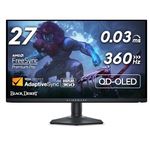
Alienware AW2725DF 27 Inch QHD (2560x1440) Gaming Monitor, 360Hz, QD OLED, 0.03ms, AMD FreeSync Premium Pro, 99.3% DCI-P3, HDR400, USB-C, 2x DisplayPort, HDMI, 4x USB, 3 Year Warranty
Alienware

9.4
5
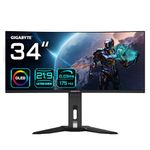
Gigabyte MO34WQC 34" OLED WQHD Curved Gaming Monitor - 3440 x 1440, 175Hz, 0.03ms, KVM, 250 cd/m², FreeSync Premium Pro, DisplayHDR True Black 400, HDMI 2.1, DisplayPort 1.4
Gigabyte

9.2
OtherUp to 18% off
15% off
6
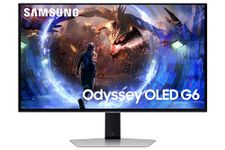
Samsung Odyssey Gaming OLED G6 LS27DG602SUXXU 27" QHD Gaming Monitor - 0.03ms, 360Hz, HDR10+, Height Adjust, HDMI 2.1, Displayport, USB 3.0, 1440p, 2560x1440
Samsung

9.0
31% off
7
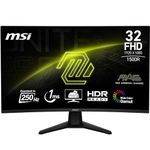
MSI MAG 32C6X 32 Inch FHD Curved Gaming Monitor - 1500R 1920 x 1080 VA Panel, 250 Hz(OC) / 1ms MPRT, Adaptive Sync - DP 1.4a, HDMI 2.0b CEC
MSI

8.8
8
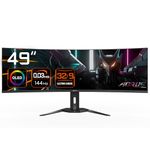
Gigabyte AORUS CO49DQ 49" OLED DQHD Curved Gaming Monitor - 5120 x 1440(DQHD), 144Hz, 0.03ms, FreeSync, DisplayHDR 400 True Black, HDMI 2.1, DisplayPort 1.4
Gigabyte

8.5
9
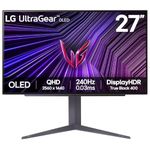
LG Ultragear OLED Gaming Monitor 27GS93QE, 27 Inch, 1440p, 240Hz, 0.03ms, OLED Display, HDR 10, NVIDIA G-Sync Compatible & AMD FreeSync, Smart Energy Saving, DisplayPort, HDMI
LG

8.3
24% off
10
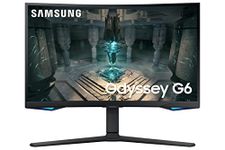
Samsung Odyssey G6 LS32BG650EUXXU 32" Curved Smart Gaming Monitor with Speakers - QHD 2560x1440, 240Hz, 1ms, Speakers, HDMI 2.1, Full Smart Platform, Freesync Premium Pro, Height Adjust
Samsung

8.1
A Guide to Selecting the Best Console Gaming Monitors
Choosing the right gaming monitor can significantly enhance your gaming experience. The right monitor will provide you with clear visuals, smooth gameplay, and an immersive experience. When selecting a gaming monitor, it's important to consider several key specifications that will impact your gaming performance and enjoyment. Understanding these specs will help you make an informed decision based on your gaming needs and preferences.
Resolution
Resolution refers to the number of pixels that make up the display on the monitor. Higher resolution means more pixels, which translates to sharper and more detailed images. Common resolutions include Full HD (1920x1080), Quad HD (2560x1440), and 4K (3840x2160). For console gaming, Full HD is often sufficient for casual gamers, while Quad HD and 4K are better for those who want more detailed visuals and have consoles that support these resolutions.
Refresh Rate
Refresh rate is the number of times the monitor updates with new information per second, measured in Hertz (Hz). A higher refresh rate results in smoother motion and less blur. Standard monitors have a refresh rate of 60Hz, but gaming monitors often offer 120Hz, 144Hz, or even higher. For fast-paced games, a higher refresh rate can provide a competitive edge and a more enjoyable experience. Choose a refresh rate that matches your gaming style and the capabilities of your console.
Response Time
Response time is the time it takes for a pixel to change from one color to another, measured in milliseconds (ms). Lower response times reduce motion blur and ghosting, which is important for fast-paced games. Monitors with response times of 1ms to 5ms are ideal for gaming. If you play a lot of action or competitive games, aim for a lower response time to ensure smooth and clear visuals.
Panel Type
Panel type affects the monitor's color accuracy, viewing angles, and response times. The most common types are TN (Twisted Nematic), IPS (In-Plane Switching), and VA (Vertical Alignment). TN panels have the fastest response times but poorer color accuracy and viewing angles. IPS panels offer better color accuracy and wider viewing angles but slightly slower response times. VA panels provide the best contrast ratios but can have slower response times. Choose a panel type based on your priorities, such as color quality, speed, or viewing angles.
Screen Size
Screen size is the diagonal measurement of the monitor's display area, usually measured in inches. Larger screens can provide a more immersive gaming experience, but they also require more space. Common sizes for gaming monitors range from 24 to 32 inches. Consider your gaming setup and how much space you have available. A larger screen can be more enjoyable for single-player and immersive games, while a smaller screen might be sufficient for competitive gaming.
HDR (High Dynamic Range)
HDR enhances the contrast and color range of the monitor, providing more vibrant and realistic images. This feature is particularly beneficial for games with rich graphics and detailed environments. Not all monitors support HDR, and there are different levels of HDR quality. If you play visually stunning games and want the best possible image quality, look for a monitor with good HDR support.
Connectivity
Connectivity refers to the types and number of ports available on the monitor, such as HDMI, DisplayPort, and USB. Ensure the monitor has the necessary ports to connect to your console and any other devices you might use. HDMI 2.0 or higher is recommended for 4K gaming. Consider your current and future connectivity needs to ensure compatibility with your gaming setup.
Best Reviews Guide Newsletter
Get exclusive articles, recommendations, shopping tips, and sales alerts
Sign up for our newsletter to receive weekly recommendations about seasonal and trendy products
Thank you for subscribing!
By submitting your email address you agree to our Terms and Conditions and Privacy Policy

